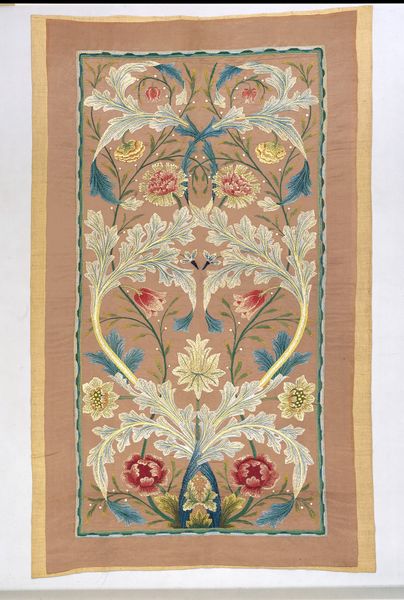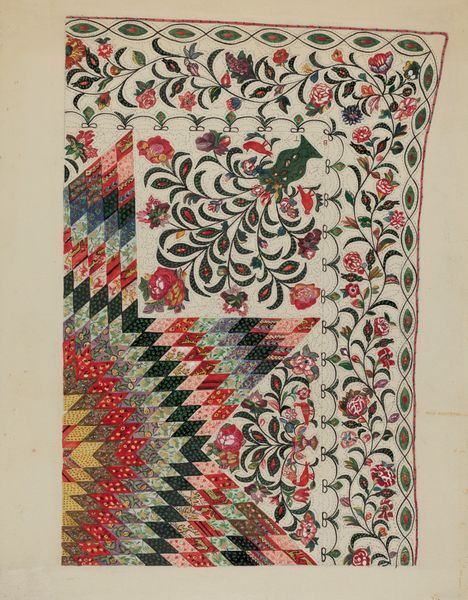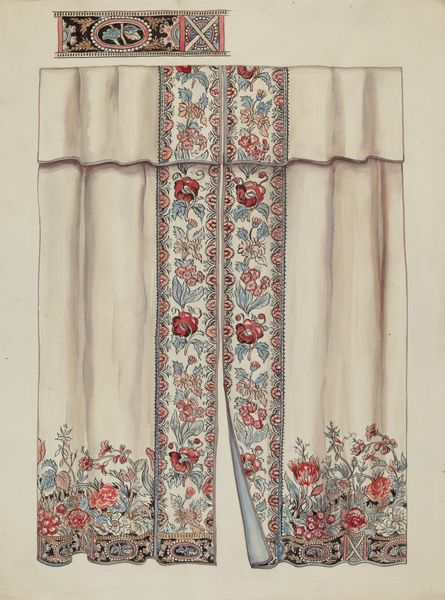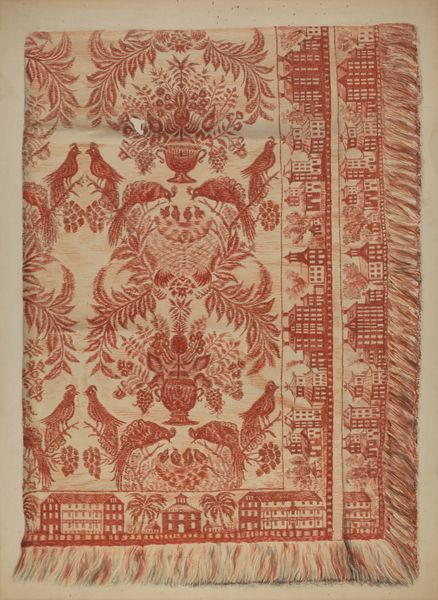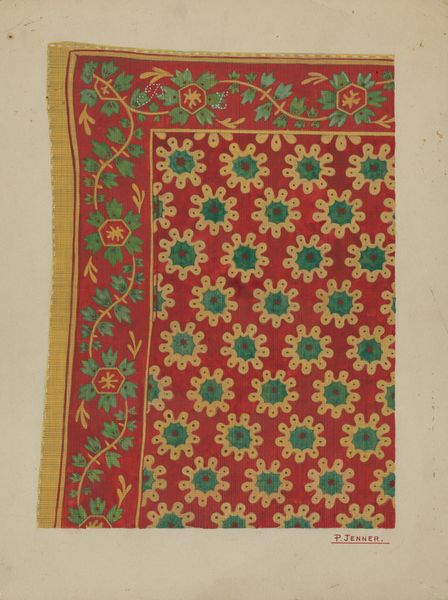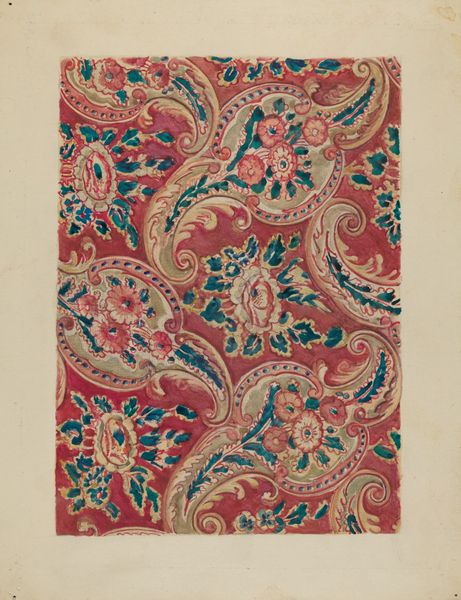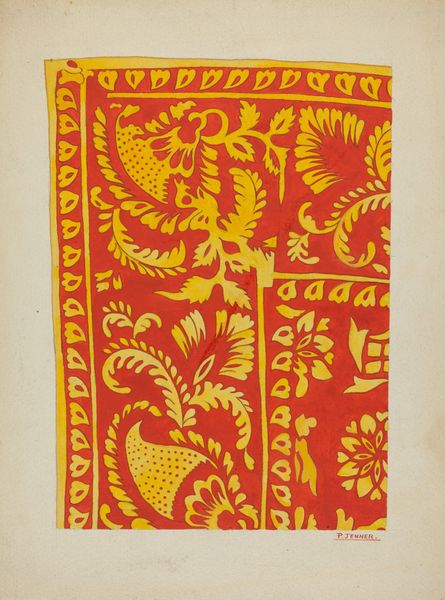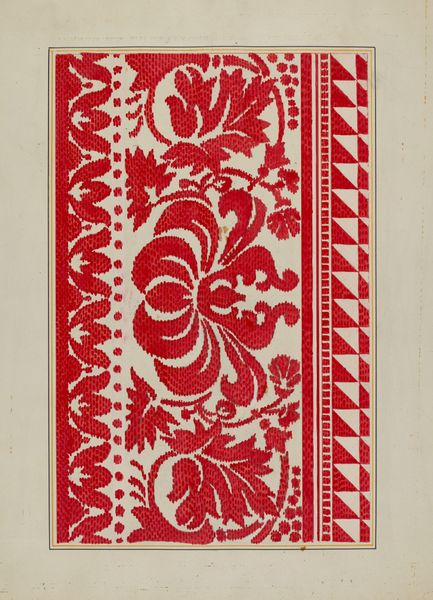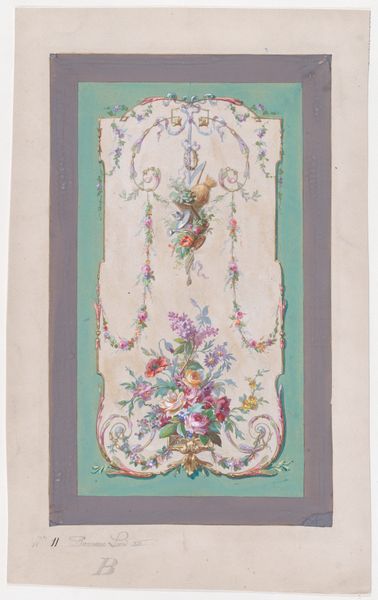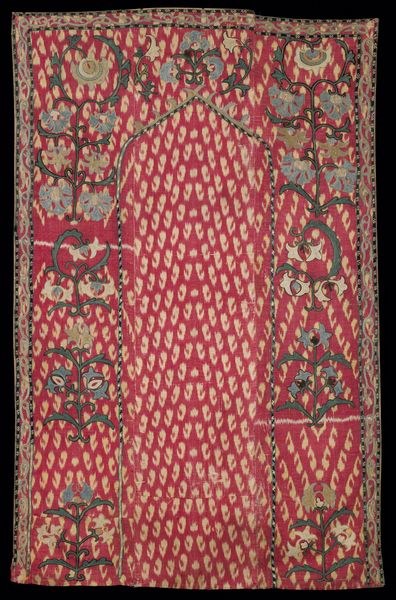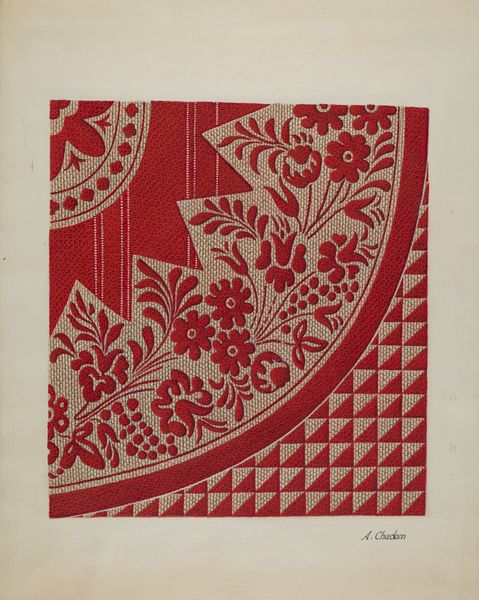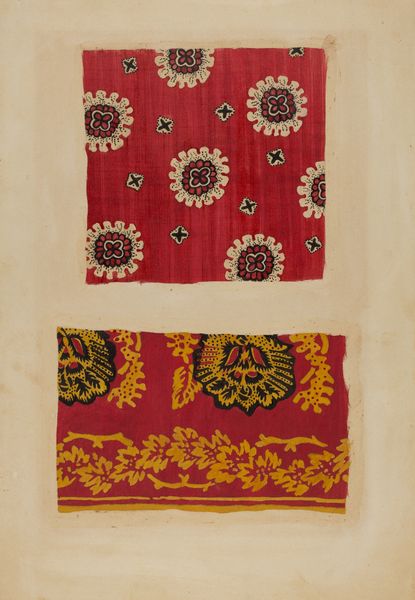
drawing
#
drawing
#
natural stone pattern
#
toned paper
#
decorative element
#
pastel soft colours
#
muted colour palette
#
pastel colours
#
feminine colour palette
#
pastel tone
#
soft colour palette
#
ethnic design
Dimensions: overall: 35.2 x 24.6 cm (13 7/8 x 9 11/16 in.) Original IAD Object: 35" in diameter
Copyright: National Gallery of Art: CC0 1.0
Editor: This is Vera Van Voris's "Plaster Ornament," a drawing from around 1936. It features these very soft, pastel colors. The design feels traditionally feminine. What does this decorative drawing evoke for you? Curator: Looking at this, I’m drawn to consider how such seemingly innocuous ornamentation can reinforce particular ideologies, particularly around gender. Consider the context of the 1930s – what social expectations were placed on women in domestic spaces? Editor: So, the drawing is of a ceiling ornament... I suppose that puts it quite literally in a domestic space? Curator: Precisely. The very act of designing such a space can be seen as a political act, defining and confining women within prescribed roles. It's fascinating how these soft colors and delicate details can be seen as both beautiful and, potentially, oppressive when we examine the cultural narrative they participate in. Does this perspective shift your initial impression? Editor: It does. I was drawn to the aesthetic, but thinking about it as reinforcing societal expectations…it feels a bit different. Like the ornament is not just decorative, but almost symbolic of a limited space. Curator: Exactly. Consider how often the “feminine” is associated with softness, passivity. Even the artistic techniques can become symbolic – muted colours might reflect a muted voice. Is there a tension, perhaps, between its aesthetic appeal and its subtle perpetuation of social norms? Editor: Definitely. It’s a beautiful drawing, but seeing it through the lens of gender and social expectation changes everything. Curator: It encourages us to question what we consider beautiful, and who benefits from that beauty. I think that critical dialogue makes for a more profound understanding and appreciation of art.
Comments
No comments
Be the first to comment and join the conversation on the ultimate creative platform.
